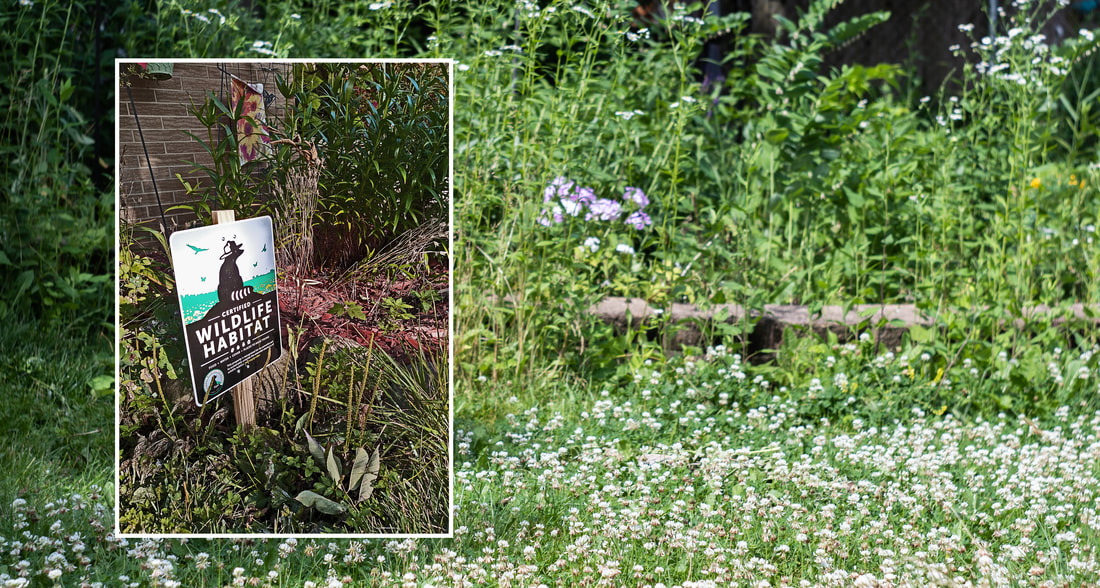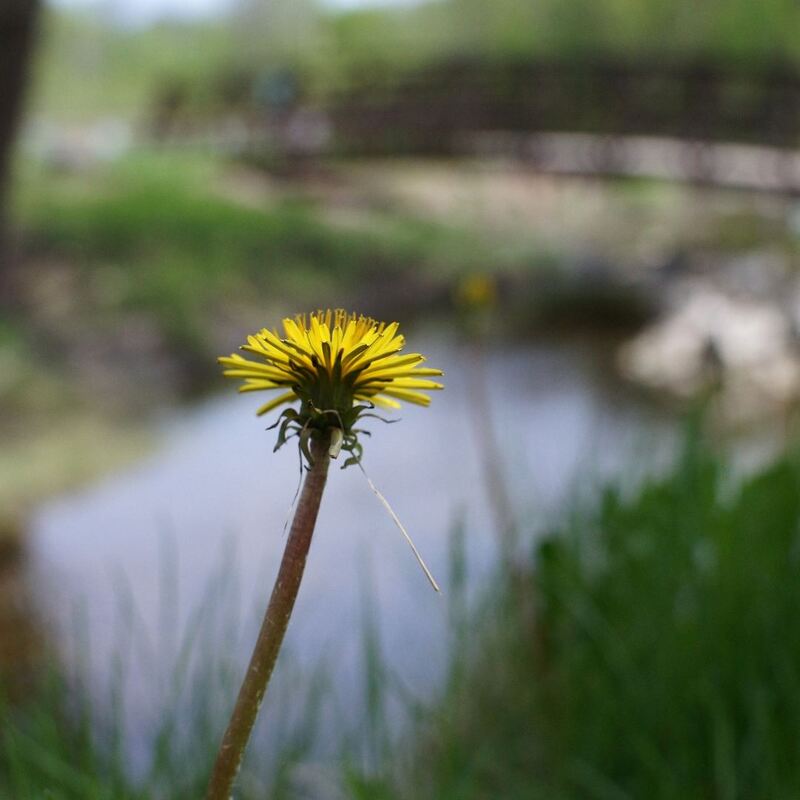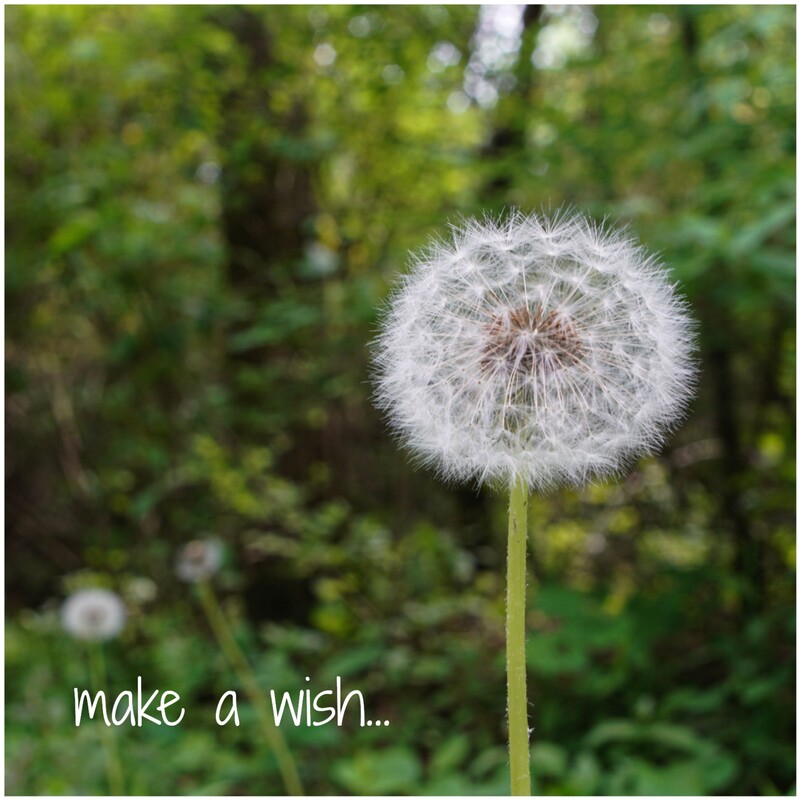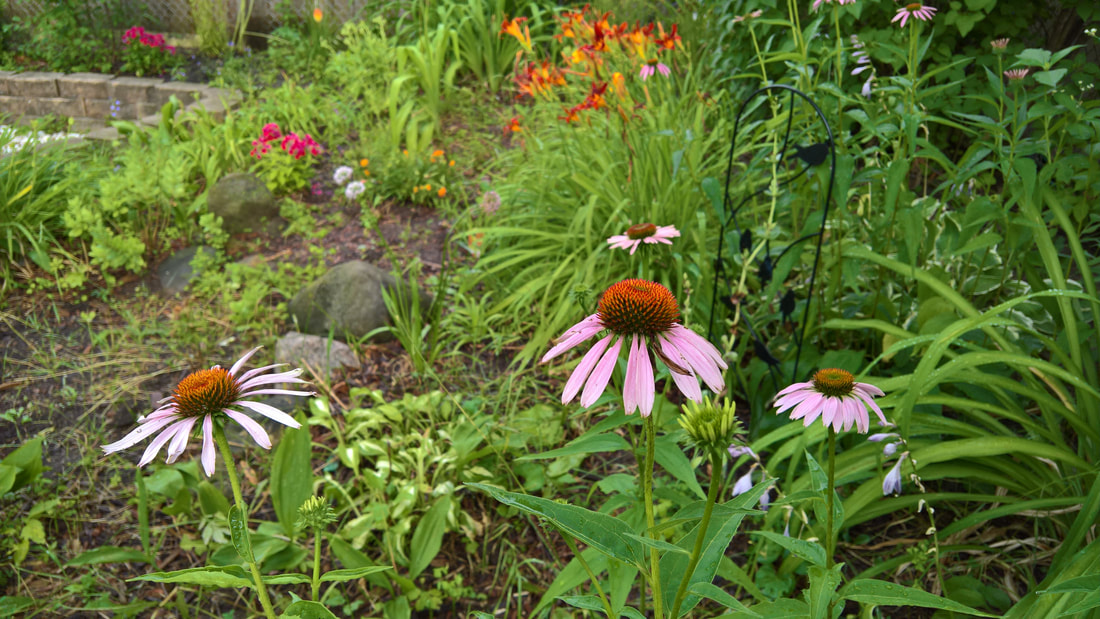THE ECO-FRIENDLY LAWN
Let your lawn be a safe haven for wildlife
First and foremost:
Avoid pesticides and herbicides, or any other chemicals harmful to wildlife. This act alone is beneficial to the environment, to wildlife, and to ourselves. Exposure to these chemicals is a health risk to all.
Avoid pesticides and herbicides, or any other chemicals harmful to wildlife. This act alone is beneficial to the environment, to wildlife, and to ourselves. Exposure to these chemicals is a health risk to all.
DANDELIONS
Personally, I've never felt it important that my grass be perfect. If it's green, it works for me. I love having a lawn full of dandelions in spring. Though dandelions have come to be known as a pesky weed over the years, I've always thought they were cheerful, and a grand sign of spring and the summer to follow. They are one of the seasons first flowers available to bees and other pollinators. And if you grow vegetables in your garden, dandelions can be a tasty distraction, much enjoyed by rabbits. The seed heads are enjoyed by the birds, too.
CLOVER
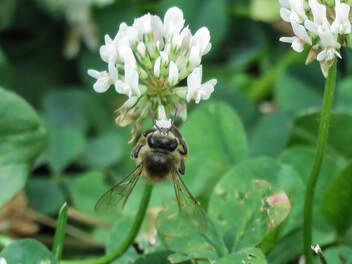
We have lots of clover in our lawn. Though frowned upon by turf enthusiasts,
clover is very beneficial to your lawn, as well as to birds, bees, butterflies and
dragonflies. Clover, actually, is a natural lawn fertilizer, adds nitrogen to the soil,
and out-competes bad weeds. It grows well in shady spots, too.
GRASS CLIPPINGS
When we mow, we mulch at the same time, leaving the grass clippings on the lawn as natural fertilizer. If you have a lot of clippings, you can add them to a leaf compost pile to breakdown into a nice natural fertilizer, or use the clippings as mulch around tomato plants to stem the advent of weeds, and keep in moisture.
WATCH FOR WILDLIFE BEFORE YOU MOW
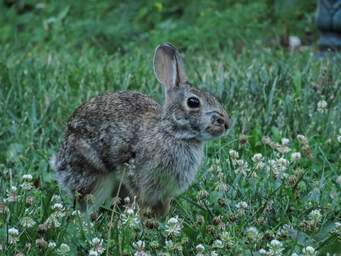
Watch for wildlife - Before we mow, we check the grass for signs of fragile wildlife - baby birds or bunnies. This way we can avoid hurting any wildlife taking shelter in our yard. Either the wildlife will move on and out of harms way, or we can avoid that area for the time being.
BRING ON THE FIREFLIES
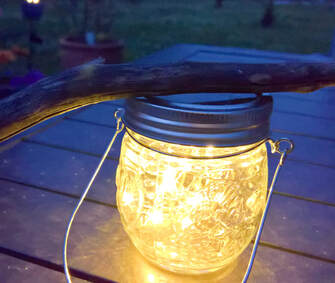
Enjoy the magical glow of fireflies - Fireflies (actually beetles, not flies) begin their lives in the ground at the base of our lawns. Pesticides kill them. So avoiding pesticides is crucial for the survival of fireflies. To benefit the fireflies, and enjoy the glow show on summer evenings, keep your grass on the longer side, and leave some taller grass or grasses along the perimeter of your yard. Tall plants, bushes and shrubs are beneficial, too, as well as some kind of water source, such as a bird bath.
(note: not fireflies in the jar, but glowing none the less)
THE AUTUMN LEAVES
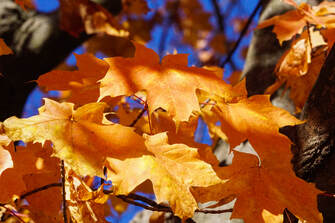
Autumn leaves...the robust colors of autumn leaves blanketing the lawn begs the question: To rake or not to rake? We rake some, we mulch some, we compost some. Depending on the volume of leaves in your yard, one or all of these options can work. If you don't get a lot of leaves, I'd suggest mulching them as you mow, as mulched leaves will be great fertilizer for your lawn and garden beds, a great preparation for the winter months ahead.
LESS TO MOW
Reduce the amount of lawn by adding garden space - the yard that came with our house is plentiful. Lots of lawn. We plan to fill in a good deal of it with a woodland garden, add to the prairie garden, and fill in with trees, bushes and and a vegetable garden. All of this takes time, of course, so practicing eco-friendly lawn care in the meantime is crucial.

